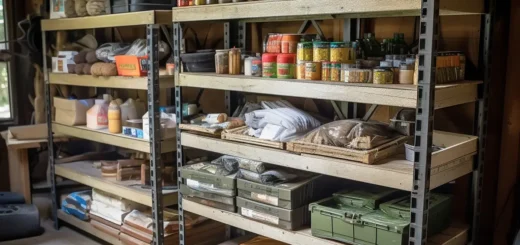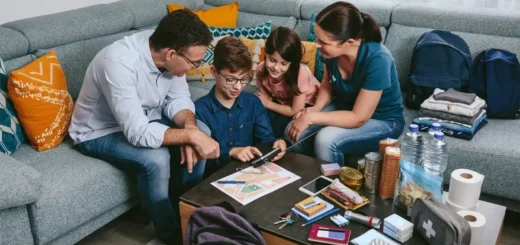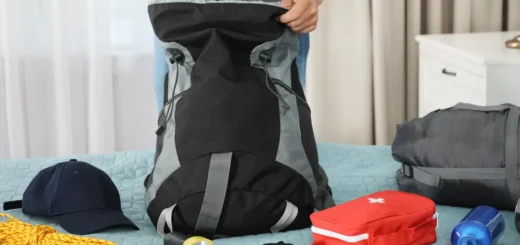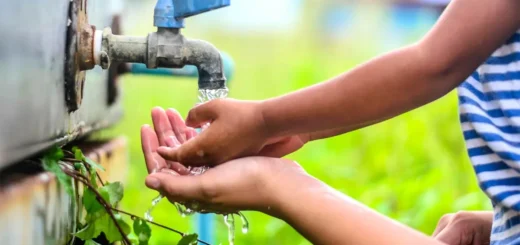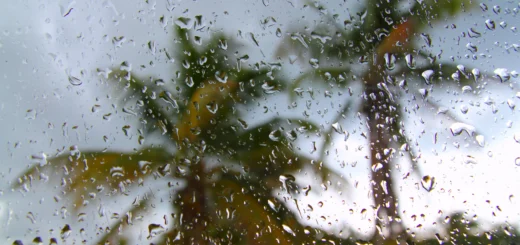The Ultimate DIY First Aid Kit Guide: Must-Have Supplies and How to Assemble Them
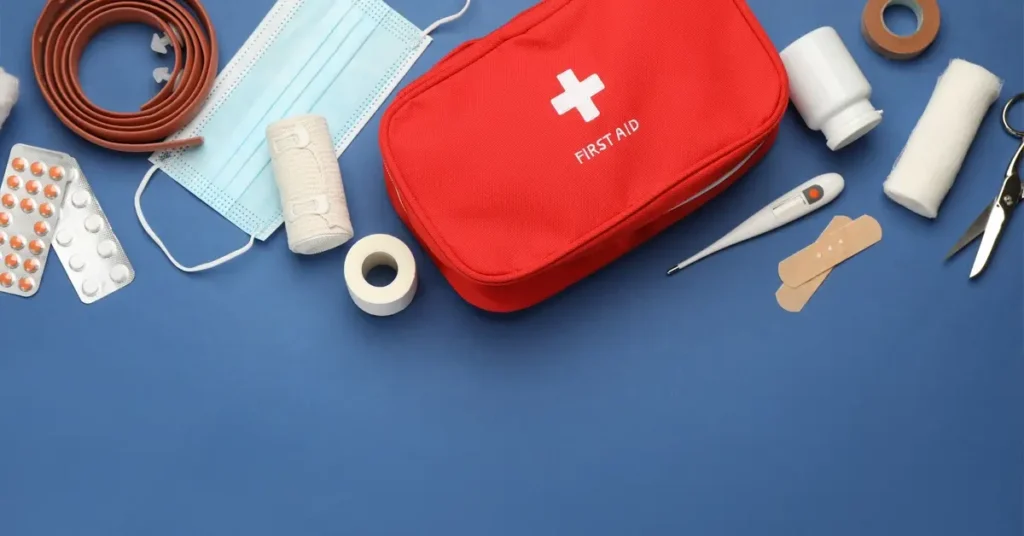
Hey there, fellow preppers! When it comes to being prepared for emergencies, one thing that should be at the top of your list is a well-equipped first aid kit.
Whether you’re heading out for an exciting outdoor adventure, ensuring your family’s safety, or simply want to have a reliable kit in your car, a DIY first aid kit is a must-have item.
You might wonder, “Why should I go for a DIY kit when there are pre-packaged ones available?” Well, that’s a great question! Building your own first aid kit has some pretty neat advantages. For starters, you get to customize it according to your specific needs and the kind of situations you anticipate. Plus, knowing exactly what’s inside and where to find it can save valuable time during critical moments.
In this comprehensive Southern Prepper guide, we’ll walk you through the essential supplies that should be in every DIY first aid kit. We’ve compiled a handy checklist that covers everything from basic wound care to medications and other miscellaneous items. So, let’s roll up our sleeves and dive into the world of first-aid preparedness!
Table of Contents
The Effectiveness of First Aid Kits in Emergencies
When it comes to emergency preparedness, having a well-stocked first aid kit can be a game-changer. Let’s take a closer look at some data points that highlight the effectiveness of first aid kits in various emergency situations.
Researchers from the University of Oxford and the University of Birmingham in the United Kingdom did a deep dive into this topic in a comprehensive article called “The Effectiveness of First-Aid Kits in Reducing the Risk of Death and Hospitalization in Out-of-Hospital Injuries.” The article was published in the journal PLOS One in 2022, and it’s packed with valuable insights.
The authors reviewed over 100,000 individuals. And the findings were eye-opening. They found that having access to first-aid kits led to a significant reduction in the risk of death from out-of-hospital injuries. Pretty amazing, right? The risk of death was 28% lower for folks with a first-aid kit compared to those without one.
The researchers also discovered that first-aid kits made a big impact on the need for hospitalization. People with first-aid kits were 42% less likely to require hospital treatment for their injuries.
The bottom line here is clear: first-aid kits are superheroes when it comes to reducing the risk of death and hospitalization in out-of-hospital injuries. So, it’s time to step up and be prepared! The experts recommend making first-aid kits more widely available, especially in areas where the risk of accidents is high.
To sum it all up, these are the key takeaways from the study:
- First-aid kits are an effective way to reduce the risk of death and hospitalization in out-of-hospital injuries.
- First-aid kits should be made more widely available, particularly in areas where there is a high risk of out-of-hospital injuries.
- More research is needed to better understand the mechanisms by which first-aid kits work.
By understanding and following these valuable findings, we can all be better equipped to handle emergencies and take care of each other when it matters most. So, let’s get ready and stay safe out there!
Why DIY First Aid Kits Matter: Tailored Solutions for Every Emergency
Let’s kick things off by talking about the undeniable importance of first aid kits in emergency preparedness.
Picture this: you’re out camping with your friends, enjoying the great outdoors when suddenly, someone cuts their hand while chopping wood. Or maybe you’re driving on a scenic road trip, and you witness a minor car accident with passengers in need of immediate medical attention. In situations like these, having a well-equipped first aid kit can make all the difference.
A DIY first aid kit lets you personalize it to fit your specific needs and lifestyle. You know your family and friends better than anyone else, so you can tailor the kit’s contents to address any potential health concerns or medical conditions unique to your situation.
Maybe you have allergies and want to ensure that your first aid kit has the right medications to manage allergic reactions promptly. With a DIY kit, you have the freedom to handpick each item, ensuring that it aligns perfectly with your individual requirements.
Another advantage of creating your own first aid kit is that you’re in full control of the quality of the supplies you include. You can opt for top-notch, trusted brands and materials, making sure that everything is up to par when it comes to performance and safety.
And here’s a little secret—building your own first aid kit can be a fun and empowering experience. It’s like putting together a puzzle with life-saving pieces, and by the end of it, you’ll feel like a preparedness pro.
Now that we’ve established the significance of first aid kits and why going the DIY route can be the bee’s knees, let’s give you an overview of what you can expect from this four-point guide.
In the upcoming sections, we’ll be your trusty guides as we walk you through the essential supplies that should be in every DIY first aid kit. From basic wound care to crucial medications, we’ve compiled a comprehensive checklist to cover all the bases.
We’ll also dive into customizing your first aid kit to suit specific situations. Whether you’re a seasoned hiker, a parent with little ones, or someone who spends a lot of time on the road, we’ve got tips and tricks to ensure your kit is tailored to your unique needs.
Finally, we’ll wrap things up with a step-by-step guide on assembling your DIY first aid kit.
First Aid Kit Essentials: Your Comprehensive Checklist for Emergency Preparedness
We’re diving into the heart of your DIY first aid kit—the essential supplies that will be your trusty companions in times of need. So, grab a pen and paper, and let’s start building your ultimate first-aid arsenal
Basic Wound Care
- Adhesive Bandages (Various Sizes): These trusty little bandages are perfect for minor cuts, scrapes, and blisters. Make sure to include different sizes to cover various wounds effectively.
- Sterile Gauze Pads: Ideal for larger wounds, sterile gauze pads are excellent for absorbing blood and protecting injuries until further treatment.
- Adhesive Tape: Keep gauze pads in place with adhesive tape, ensuring proper wound care and reducing the risk of infection.
- Antiseptic Wipes or Solution: Cleaning wounds promptly is crucial to prevent infections. Antiseptic wipes or solution help keep wounds sanitized before dressing them up.
- Antibiotic Ointment: A thin layer of antibiotic ointment can accelerate the healing process and protect wounds from bacteria.
Injury Management
- Ace Bandage or Elastic Bandage: These bandages are essential for supporting sprains, strains, and joint injuries, helping you stabilize the affected area until professional medical help is available.
- Instant Cold Packs: Cold packs provide instant relief for swelling and minor injuries. They’re particularly handy for treating strains and sprains.
- Tweezers and Scissors: Tweezers come in handy for removing splinters and foreign objects, while scissors are useful for cutting bandages and tape to size.
- Thermometer: A reliable thermometer allows you to monitor body temperature, a vital sign that can provide essential information during emergencies.
Medications
- Pain Relievers (e.g., Acetaminophen, Ibuprofen): Over-the-counter pain relievers can help manage pain and discomfort caused by minor injuries or headaches.
- Antihistamines (for Allergic Reactions): An antihistamine can be a lifesaver in case of allergic reactions to insect stings, certain foods, or other allergens.
- Antidiarrheal Medication: For gastrointestinal issues or food poisoning, an antidiarrheal medication can provide much-needed relief.
- Antacids: Antacids help soothe heartburn and indigestion, providing comfort in unexpected situations.
Miscellaneous
- CPR Face Shield or Pocket Mask: In case you need to perform CPR, a face shield or pocket mask helps protect both the rescuer and the person receiving aid.
- Medical Gloves: Always keep a pair of medical gloves in your kit to protect yourself from bodily fluids and maintain hygiene during first aid procedures.
- First Aid Manual or Guide: A comprehensive first aid manual provides step-by-step instructions, guiding you through various emergency scenarios.
- Emergency Contact Information: Include important contact numbers for local emergency services, medical professionals, and family members.
There you have it—a checklist of supply ideas for your DIY first aid kit! With these items at your disposal, you’ll be well-prepared to handle various injuries and emergencies.
Customizing Your First Aid Kit for Your Unique Needs
Now that you have a rock-solid foundation of essential first-aid supplies, it’s time to take it up a notch and make your kit uniquely yours.
One of the coolest aspects of DIY first aid kits is that they allow you to customize them according to your lifestyle, activities, and the specific situations you might find yourself in.
Outdoor Adventures
If you’re an outdoor enthusiast who loves hiking, camping, or exploring nature’s wonders, your first aid kit should be ready for anything Mother Nature throws your way. In addition to the basic supplies, consider adding these outdoor-specific items:
- Insect Repellent: Keep those pesky bugs at bay and enjoy your adventure bite-free.
- Sunscreen: Protect your skin from harmful UV rays, especially during long hours outdoors.
- Blister Pads: These can be a game-changer for preventing and treating blisters caused by hiking or walking.
Family-Focused Kit
When it comes to your loved ones, safety is the top priority. Customize your first aid kit to cater to the unique needs of your family members, especially if you have children or elderly individuals under your care:
- Children’s Medications: Ensure you have appropriate medications for children, following age-appropriate guidelines.
- Baby Wipes: These versatile wipes come in handy for cleaning up messes and spills.
- Pediatric Dosage Syringe: A precise dosage syringe helps administer liquid medications to little ones.
Car First Aid Kit
Your car can become your lifeline in emergencies, so it’s essential to have a well-equipped first aid kit on the go:
- Roadside Flares or Reflective Triangle: Increase visibility during car breakdowns or roadside emergencies.
- Emergency Blanket: Stay warm and protected in case of unforeseen delays or accidents.
- Seatbelt Cutter and Window Breaker: Vital tools for escaping a vehicle in case of entrapment.
Advanced First Aid Items (Optional)
For those who want to take their preparedness to the next level, consider adding these advanced items to your kit. Please note that proper training and knowledge are essential for their safe use:
- Tourniquets: Effective for controlling severe bleeding in emergencies.
- Israeli Bandage or Compression Dressing: Ideal for applying pressure to wounds and controlling bleeding.
- Chest Seals: Designed to treat open chest wounds and prevent air from entering the chest cavity.
The goal is to create a first aid kit that fits your lifestyle and needs. Don’t forget to consider any specific medical conditions you or your family members may have and include medications or supplies accordingly.
Assembling Your DIY First Aid Kit
Congratulations on reaching the final stretch of our Ultimate DIY First Aid Kit Guide, fellow preppers! It’s time to roll up our sleeves and put together your customized first aid kit.
The thrill of assembling your very own life-saving arsenal is just a few steps away, so let’s get started.
Choosing the Right Container or Bag
The first step in assembling your DIY first aid kit is finding the perfect first aid medical bag to hold all your supplies. You want something durable, portable, and easily accessible. A compact and waterproof container, like a sturdy plastic box or a well-designed first aid pouch, is a fantastic option. Make sure it’s large enough to fit all your supplies comfortably while still being easy to carry in your backpack or car.
Storage and Accessibility Considerations
Organize your supplies in a logical and easy-to-reach manner. Group similar items together and use small containers or zip-lock bags to keep things neat and tidy. This way, you won’t waste precious time rummaging through your kit when every second counts.
To ensure maximum accessibility, place the most frequently used items, such as adhesive bandages and antiseptic wipes, in an outer pocket or on top of the kit. That way, you can grab them quickly without having to dig through the whole kit.
Regular Checkups and Restocking Procedures
Like any good prepper, you’ll want to stay on top of your first aid game. Regularly check your kit to make sure all the supplies are up to date and in good condition. Items like adhesive bandages and antiseptic wipes have expiration dates, so keep an eye on those and replace them when needed.
Also, consider your family’s changing needs and activities. If you’re going on a camping trip, restock your blister pads and insect repellent. If your little one has grown, update their medications and dosage syringe accordingly. Being proactive with restocking ensures that your kit is always ready for action.
First Aid Training and Familiarization with Kit Contents
Having all the supplies in the world won’t be as effective without knowing how to use them properly. Consider taking a basic first aid course to equip yourself with life-saving skills and knowledge. Many local organizations and community centers offer these courses, and they’re well worth the time and effort.
Also, familiarize yourself with the contents of your first aid kit. Take some time to go through each item and understand its purpose and usage. You’ll feel more confident and prepared in emergencies, knowing that you can rely on your own expertise and your well-stocked kit.
Congratulations on assembling your DIY first-aid kit! With all the essential supplies organized and ready to go, you’ve taken a significant step towards being prepared for any emergency. Your customized kit is a reflection of your unique needs and lifestyle, making it a powerful tool in your preparedness journey. Stay safe, stay prepared!


